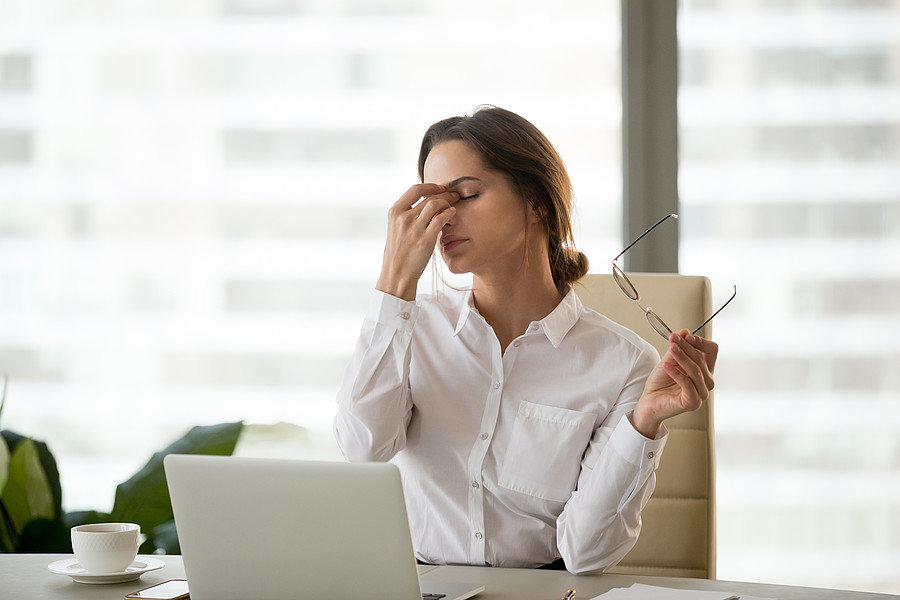How long do you spend in front of a screen each day? Add up these hours over a week, and it can be quite a considerable chunk of your time. Between laptops, PCs, mobile devices, and so on, our eyes are put under considerable strain daily. Around 50% of frequent screen users have some form of eye strain in varying degrees of damage.

With digital eye strain becoming increasingly common due to more and more people staring at screens each day, what can you do to minimize the risk to your eyesight?
20/20/20 Rule
If you are looking at a screen for 20 minutes, look away for 20 seconds at something 20 feet away.
Our eyes aren’t designed to be looking at screens for continuous periods, or anything in fact. So being able to look away frequently can assist you in maintaining good eye health.
Regular Appointments
If you never visit your optician, you will never know if you have any serious issues. If you are too busy, book eye exam online and make sure to follow it up to help you identify any problems and get some expert advice.
Use Night Mode
Night mode is available in many smartphones, and you can turn this feature on easily, and your phone will automatically reduce according to the time of day. This can go a long way in reducing screen brightness.
Blink
How often do you blink when looking at a screen? Many people fall into the bad habit of forgetting to blink, especially heavy mobile users. Remind yourself to blink, especially if your eyes feel gritty or dry. Use artificial tears to help you moisten your eyes if required and lessen any damage caused by looking at screens for too long.
Blue Light Protection
These days, many newer digital devices are equipped with blue light protection to protect your eyesight from damage from screens. You can also ask your optician to apply a coating on your lenses to help reduce glare.
Reducing the color of your screen can also reduce the amount of blue light emitted.
Use Good Lighting
Try as much as possible to work in a well-lit room. Of course, this shouldn’t be an issue in the office but when at home try to avoid using the screens in dark rooms as this will put more strain on your eyes and cause excess damage.
Use High-Resolution Screens
Screens today often have refresh rates of 75Hz or higher. The higher the number, the better. Furthermore, higher resolution screens appear more lifelike. When you can’t see the pixels, your eyes have to work harder to interpret the visuals in front of you.
Over time, with sustained usage, our screens can damage our eye health, and neglecting to preserve your eyesight and your eye health can have untold damage as you get older. Remember, regular breaks help, as does adjusting screen resolution and making sure you visit your optician as required.
Leave a Reply